The Best Online Educational Site for Hitting Techniques,Rotational Hitting & Batting Mechanics, T-Ball, Little League, Girls Softball, High School Softball or Baseball, & Professional Batting Fundamentals, Hitting Mechanics
|


What are the four most important things to do in hitting? Let's start off by buying a bat: Don't let your parents or relatives buy your bat because you need to swing it in the store and make sure the bat is the right weight -10 ounces less than its length, is usually good for children ages 7 thru 12 years old. Make sure you can get bat speed. You have to be able to hear the whip when you swing. Too heavy of a bat could slow your bat speed down. Children 13 & up should select a bat that they can handle, not what there friends use. Where to stand in the batters box: The batters box is 6 feet long by 4 feet wide. I like my players to stand with one foot even with the front of the plate. If you stand deep in the batters box, you have less chance of hitting a curve ball as it crosses the front of the plate and then drops, but you'll probably hit the fastball better. Don't stand too far from the plate as you will not be able to hit the outside pitch well. If you have really good bat speed, stand close to the plate and about one foot in front of the plate, as it is easier to hit the curve ball as long as you can still hit the fastball. Keeping your eye on the ball: Every coach tells you that. Let me explain. Once you get set and the pitcher starts his windup, you picture a window where the release is going to be and your eyes shift from the pitcher to the window, then watch the release until the ball meets the bat. See if you can see the ball hit the bat. After you hit the ball, don't follow the ball with your eyes. Focus on first base and listen to the first base coach. After three or four steps at full speed, glance to see where the ball went, while running full speed to first base. Get into hitting position: Hold knob of bat down even with your arm pits which is the top of the strike zone. Hold bat even with your back foot. No matter what your hands or bat are doing before the pitch, they must be in the hitting position before you swing. What's a trigger or a cock of the hands?: It's a movement with your body to get ready to hit. A slight turn on the front knee which turns your shoulder slightly in which moves your hands and bat back. Do not move your hands alone as it causes mistakes in the way you hold the bat. Example: flattening your bat so you would swing late. Make sure when you trigger that the bat is slightly tilted towards your head. Stride or step: All coaches tell you to step or stride into the ball, but never tell you how much. Maximum stride or step is 6 inches. When you stride your front foot goes forward on the ball of the foot and your hands go back away from your front foot. Do not stride on the heel of your front foot because you will open up your front shoulder, pull your head and drop your bat slightly. Do not step away from the plate. Step directly at the pitcher. If you stride too far your hands will move forward and you will get fooled all the time and be out in front of off-speed pitches and probably pop up. You will not be able to hit a high strike and beat low pitches into the ground. A stride or step can also be a step up and down in the same place, or just lift the front heel then pivot on the front foot and put the heel down to hit. Turning the hips: The hardest thing I found teaching youngsters. If you start your hips first it gets your bat started quicker. You must pivot on the ball of your back foot until the heel is facing straight back and your belly button is facing the pitcher. Most people start there hands by shifting into the front foot first. The hips are very important in hitting for power. Weight Shift: A difficult thing to teach youngsters. The proper way is to turn your hips and at the point of contact, your weight shifts against your front leg (ROTATIONAL HITTING) not onto your front leg (LINEAR HITTING). If you shift onto your front leg you lose your power of your back leg, and you'll be hitting a lot up the middle and to the opposite field. If you hit against your front leg, your driving all your weight into the leg which creates power. You can still hit to the opposite field, just swing as the ball is crossing the plate not out in front of the plate front like a front foot hitter. You also have more time to look at the ball. Amatuer & Pro Players Weight Shift Gallery's below. Amatuer Players Weight Shift Gallery Pro Players Weight Shift Gallery Swinging the bat: There are four ways to swing a bat. There's the upper cut or golf swing. It's very difficult to hit a good fastball waist high or an inside pitch at the knees. When they do hit it, it's usually a fly ball to the opposite field. The level swing. You have most coaches say swing level. You hit a lot up the middle and to the right side. You do not get around on the good fastball. The down swing, which is when you throw the head of the bat at the ball and keep your knob down. You can pull the ball very good this way and still hit to the opposite field if you want to. The down level swing, which is when you swing down and level through the strike zone. Question: How do you hit a pitch at your knees swinging level? Answer: You can't. Your swing is very flat and it's hard to hit high and low pitches. You usually hit to the opposite field swinging late or you hit everything off the handle on inside pitches. I teach swinging down on the ball using your top hand and throwing the bat at the ball. Also hit the ball inside your front foot. When you make contact, your top hand is palm up and your bottom hand is palm down. If you learn to swing down you can hit high pitches, inside pitches, outside pitches and low pitches. The fourth way is swing down and level into the ball. The knob remains down until you level off. At the point of contact your hands start to rise. Bat must remain above hands until leveled off. If your bat drops below hands before leveling off, you will be late on your swing. Power "V": After the point of contact your arms extend fully. Your arms look like a "V" where you have the most power. If your arms stay collapsed, you can't drive the ball well. Amatuer & Pro Players Power "V" or Extension Gallery's below. Finishing your swing: Always finish your swing to your shoulder. If you can't reach your shoulder, let go of the bat with the top hand where your shoulder should be. Swing through the ball like there's a row of balls in your bat plane. Amatuer & Pro Players Finished Swing Gallery's below.
Amatuer Players Finished Swing Gallery Hitting to the opposite field: Stay back, don't shift too early, you will probably pop up. Wait for ball where you want it then turn your hips, keep front shoulder closed, swing down on the ball, stay back and drive the ball to opposite field.
Exercises: Swinging the bat. First you get on one knee. If your right handed your right knee on the ground and if your left handed your left knee on the ground. If you want, you can put a pillow or cushion on the floor to protect your knee. Keep your back straight and your hands in the hitting position. Then swing down 100 times a day looking in a mirror at the knob of your bat to make sure your swinging down correctly over your front knee. Then finish your swing to your shoulder. Remember to keep the bat head above the ball. Your swing will look like this in a week.
Pivoting or turning your hips: Put your bat behind your back, get your father to hold your rear shoulder and your front hip. Then pivoting your backfoot 100 times a day. Make sure your backleg is in an " L" position and do not lean forward or your father will lean his arm back into your chest forcing you to keep your weight back on the rear foot. If you pivot on your front heel, put your front foot against a wall, curb or cement block and then lean forward on to the ball of your front foot and then pivot your feet on balls of both feet. Then put the front heel down after turning your hips and your back heel should remain up.
Travel Information : Do You Need a Batting Coach in the Northeast?
Looking for a Batting Instructor for the summer?
I'm Looking to get away for the summer
Call Coach Phil at: 561-252-2991
Live in $500.00 per week, room & board plus gas
& tolls and all the BATTING you can handle
IF YOU HAVE ANY QUESTIONS OR NEED ANY HELP PLEASE E-MAIL ME AT: coachphil@batlikeapro.com or thebattingcage@gmail.com
 Hi-My Name is PHIL: I own and instruct at THE BATTING CAGE. Let me tell you something about myself. I have been a Counselor, Baseball Coach, Baseball Director, Director and Owner of Baseball Camps since 1968. In 1985 I opened a Batting Cage to instruct youngsters in the proper mechanics of hitting a baseball.
Hi-My Name is PHIL: I own and instruct at THE BATTING CAGE. Let me tell you something about myself. I have been a Counselor, Baseball Coach, Baseball Director, Director and Owner of Baseball Camps since 1968. In 1985 I opened a Batting Cage to instruct youngsters in the proper mechanics of hitting a baseball. 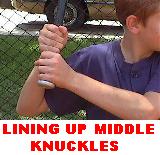
How to hold a bat: Line up your little knuckles on both hands. That's the middle set of knuckles. Do not choke the bat or hold it too loose. Stay loose until your ready to swing. Then tighten your grip on the lower hand and hold the top hand a little looser so you can be able to roll your wrists.
Batting stance: Everyone has a different batting stance. Choose a comfortable stance, that's not too wide and not too short. I teach a shoulder width plus a step. Which is about 18 to 24 inches apart. There's also a closed stance where your front foot is closer to the plate than the back foot also the open stance where the front foot is further from the plate than the back foot. You also have to step towards the plate before the pitch is thrown. Make sure your knees are bent and your weight is on the balls of your feet. 



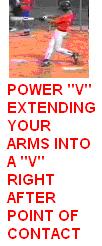

ProPlayers Finished Swing Gallery
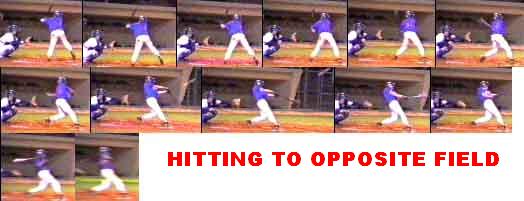
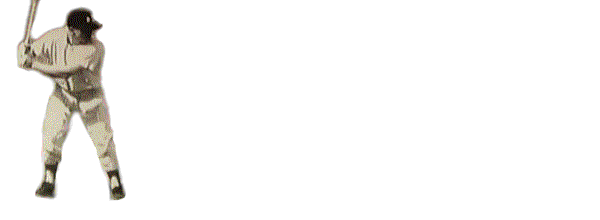
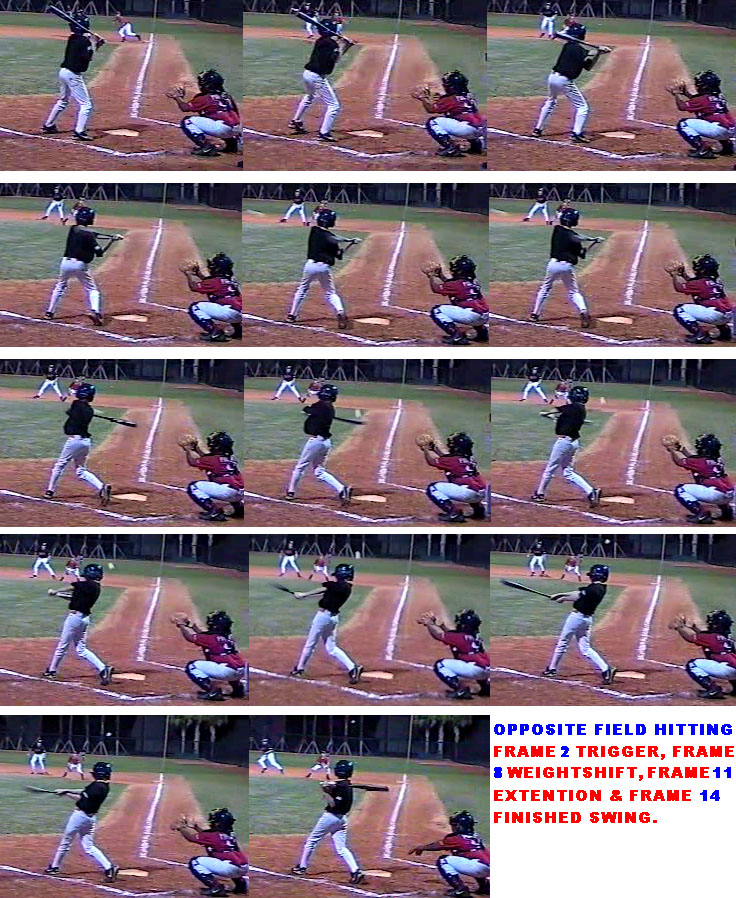
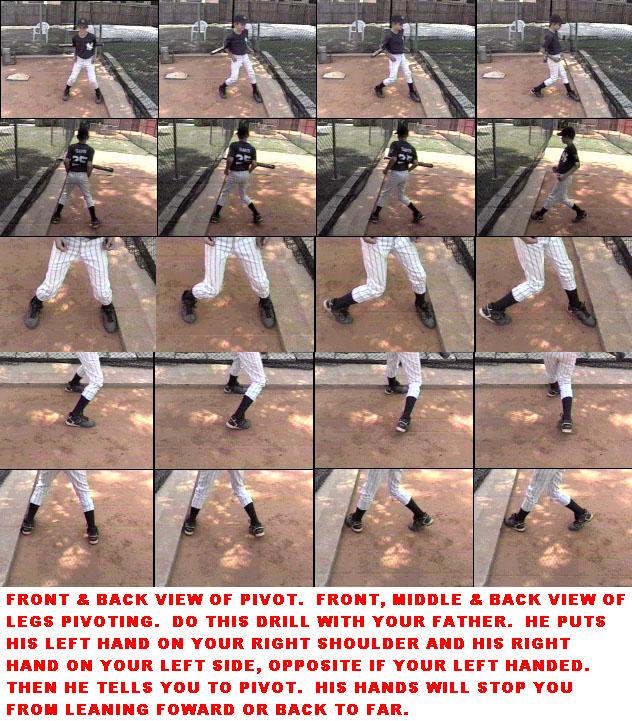
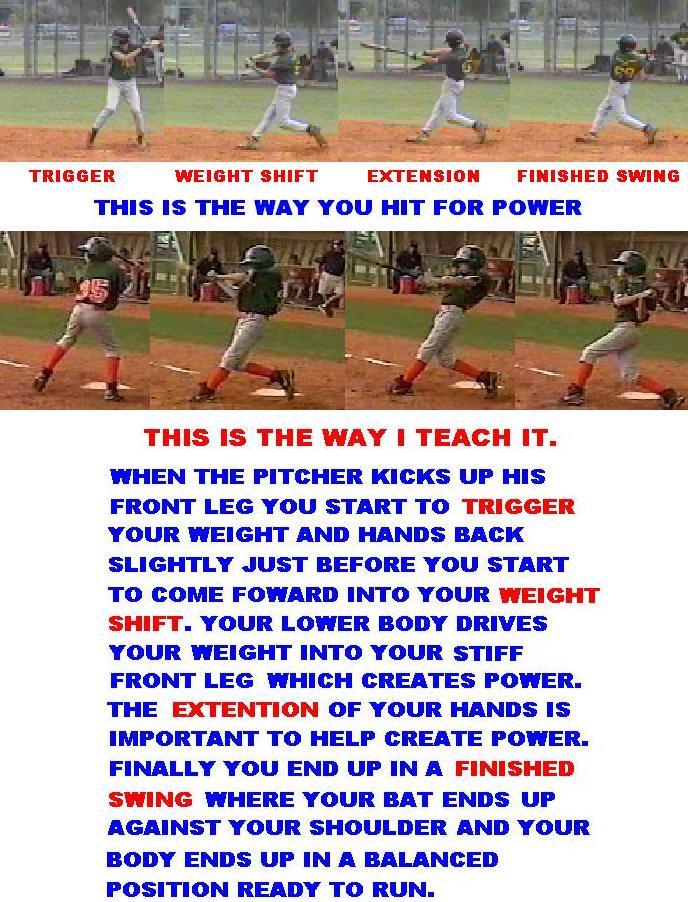
I will be available from June 5, 2013
in the Northeast till August 27. 2013


